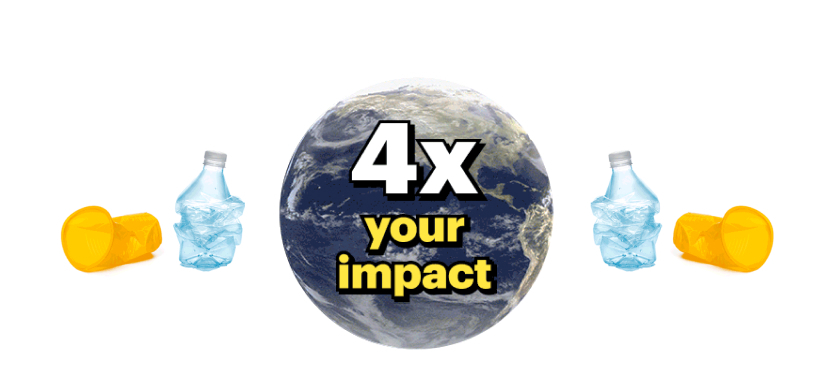With Russia’s invasion of Ukraine, we are yet again reminded of the dangers posed by our dependence on fossil fuels. Companies and countries too easily manipulate the market for profit and political gain.
Following new European sanctions against Russia, American fracked gas companies were only too happy to take advantage of the crisis. They’re touting fracked gas as an alternative to Russian fossil fuels. But if allowed to continue, the industry will lock in huge profits — as well as a supercharged trans-Atlantic fossil fuel trade and continued U.S. and EU dependency on fossil fuels.
To export fracked gas, companies liquefy it and ship it overseas — such gas is known as liquefied natural gas (LNG). America began exporting LNG thanks to the glut of gas brought by the fracking boom, starting about eight years ago. In that time, the U.S. has gone from importing gas to, this year, becoming the largest LNG exporter in the world. We cannot allow this growth to continue.
Fracked Gas Companies Plan To Profit While Prices Hurt Families
At the moment, global prices for LNG are nine times more than they were just two years ago. Those prices, in energy terms, are comparable to a $200 barrel of oil. (Even now, with oil prices in the news daily, a barrel of crude has hovered around $100.) The new demand from Europe disrupted fracked gas markets, and prices rose as more competitors vie for supplies.
That includes prices here in the U.S. The growth of LNG exports caused the soaring home heating prices that slammed low-income families last winter. In June 2022, an explosion at a Texas LNG export facility took 20% of U.S. export capacity offline. The result: market prices for fracked gas dropped in just a few hours. The explosion stopped exports that would have gone abroad. That unexpected supply flooded U.S. markets, and U.S. prices fell. Exporting domestic supply to the highest bidder has clear impacts on our energy costs at home.
The growing export industry has allowed U.S. LNG companies to pull in millions of excess profits from these high prices. In 2022’s first quarter, four of the biggest gas companies reported growing sales, profits and stock buybacks. This year, Cheniere, America’s largest LNG company, reported double the revenues compared to last year.
At the same time, exporters are using the crisis in Europe as an opportunity to build out infrastructure on our shores. In February, Cheniere’s CEO said to investors, “…the fact that there’s a scarcity of LNG these days is driving more and more conversation on how to increase our infrastructure and secure monthly contracts for our European customers.”
Yet, these new export terminals won’t help Europe much when there isn’t enough infrastructure there to move fracked gas. On top of that, a May report by E3G found that the EU’s energy sector can transition off Russian gas by 2025 without the need for any new LNG infrastructure. Renewables are the clear winner when it comes to securing energy security.
Fracked Gas Presents Terminal Health Risks To People And Planet
LNG isn’t nearly as climate-friendly as its proponents want us to believe. LNG exports require liquifying, regasifying and transporting processes, which are energy-intensive and create more pollution. Plus, LNG creates pressure in the tanks it’s stored in, making it necessary to vent some gas. The resulting leaks make LNG more damaging for the climate than coal. The emissions of all these processes nearly equal that of burning the gas itself — in other words, exported LNG has double the climate impact of fracked gas used domestically.
Fracked gas infrastructure also comes with a host of health and safety risks for nearby communities. Every step of the supply chain, from drilling, to pipelines, to transport, comes with risks of explosion. Between 2010 and 2019, our government recorded 1,226 gas pipeline safety incidents, including fires and explosions. These incidents killed 25 people, injured 108 and caused $1.3 billion in damages. But only 5% of fracked gas pipelines must report incidents. The number of casualties is surely higher.
One region threatened by proposed new LNG infrastructure is the Gulf coast. The projects there are set to decimate wildlife habitats, desecrate Indigenous historical sites and disproportionately impact marginalized communities with toxic pollution. This pollution can create smog, cause asthma and damage lungs. The risks are disproportionately borne by people of color.
Fracked Gas Exports: No Quick Fixes, Only Long-Term Consequences
Anything corporations do to expand LNG today will not change prices or stop shortages in the months to come. In fact, pipelines and export facilities take years to come online.
The industry shows its hand as it pursues long-term contracts. This isn’t about helping other countries in a short-term crisis — it’s about locking in decades of business at the expense of marginalized communities and planetary wellbeing.
Any investment in expanding fossil fuels is wildly out of step with the current science on climate change. Earlier this year, the Intergovernmental Panel on Climate Change made clear that any such expansion “will rob us of our last chance to avert climate chaos.”
And LNG infrastructure is no minor investment. A single export plant costs billions to build. If the industry has its way, the U.S. risks squandering enormous sums on a market that will likely dry up in a few years. The future of LNG is clear — billions wasted on stranded assets and ever more dependence on climate-wrecking fossil fuels.
We already have the tools to face down climate change. The Future Generations Protections Act will stop fracked gas exports, among a host of other climate-saving measures. If we are to secure a brighter, greener future, we have to stop LNG exports now.
Tell Congress to support the Future Generations Protect Act.

Time to face it —~it’s people or plastics.~We can’t have both.
Become a plastic pollution fighter this Earth~ Day and have your gift MATCHED $3-to-$1!


